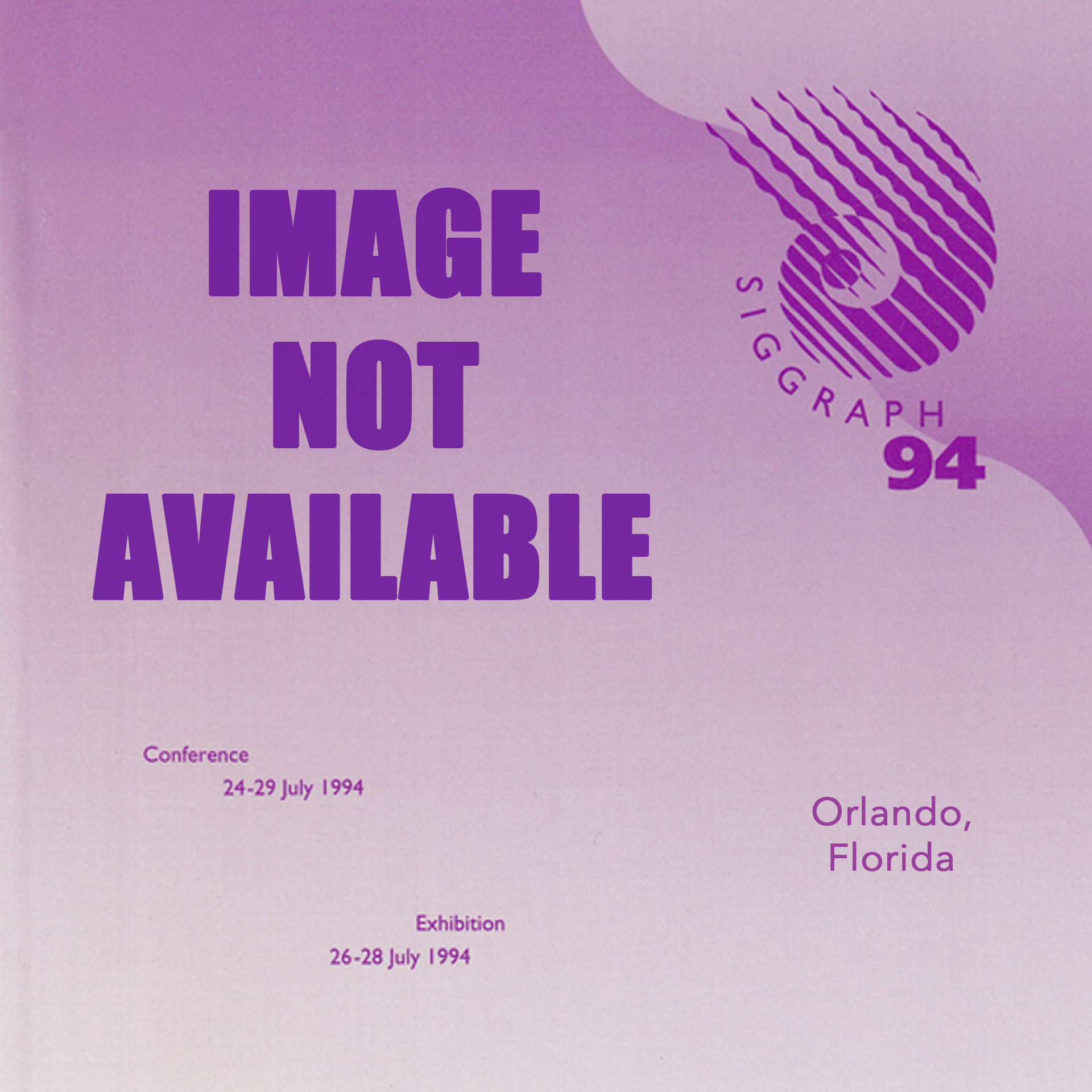“The Personal Flogistabarium Release 1.0 Name of Experience: Waving” by Park
Notice: Pod Template PHP code has been deprecated, please use WP Templates instead of embedding PHP. has been deprecated since Pods version 2.3 with no alternative available. in /data/siggraph/websites/history/wp-content/plugins/pods/includes/general.php on line 518
Conference:
- SIGGRAPH 1994
-
More from SIGGRAPH 1994:
Notice: Array to string conversion in /data/siggraph/websites/history/wp-content/plugins/siggraph-archive-plugin/src/next_previous/source.php on line 345

Notice: Array to string conversion in /data/siggraph/websites/history/wp-content/plugins/siggraph-archive-plugin/src/next_previous/source.php on line 345

Type(s):
Entry Number: 22
Title:
- The Personal Flogistabarium Release 1.0 Name of Experience: Waving
Program Title:
- The Edge
Presenter(s):
Collaborator(s):
Description:
The purpose of this project is to introduce the concepts of three-space, the integration of cyberspace with realspace and mindspace. This shift from a bipolar reality to a tripolar reality is a significant development in the evolution of man. The personal flogistabarium demonstrates the experience of living in threespace. Because cyberspace exhibits properties more like mindspace than realspace, the simulation expresses the internal void. Rather than virtual reality, this is virtual mindspace. Visitors go waving in this space.
Description
A visitor reclines in the neutral posture of the flogiston chair. Above and close by, at an angle, is an 8-foot by 5-foot curved screen which occupies the visitor’s full vision. An HDTV projector mounted behind the screen back-projects real-time imagery. The entire system is installed inside a black dropcloth enclosure that keeps out all external light. A surround-sound system with six speakers supplies audio. Alternatively, a high-resolution HMD can be used if its configuration can meet weight, resolution, and ease-of-use requirements.
The personal-motion platform supplies motion cues and low-frequency vibration to the occupant. The combination of the neutral posture and the motion cues provides a sense of floating or flying in cyberspace when coupled to the imagery and sound. This increases the fidelity of the experience and the sense of experiential immersion.
The experience is simplified to reduce the learning curve within the short time available. Control is limited to leaning the chair in the direction the visitor wants to go. This is intuitive and should be simple to master within the first minute. Alternatively, a Logitech Cyberman can be used as a joystick.
The visit starts with the visitor leaving the ground and joining fellow virtual visitors in a flying-V formation through the dark night. Motion cues provide the sense of rising into the sky. The visitors fly upward toward the moon, which turns into a space tunnel through which they enter cyberspace. The imagery, vibration, and music combine to form a vision of deep mindspace, where flow is the only experience – the optimal experience, as Csikszentmihalyi calls it. Stress is reduced, the body is forgotten, and consciousness is lost in deep peace. The visitor coasts for a few minutes in the void of cyberspace and then is gently returned to realspace. The effect is an unforgettable positive experience of wonder and expectation: “This is the way to the stars…”
The flogistabarium consists of:
1. Flogiston chair
Neutral posture chair that supports the body in a minimal-stress posture similar to the posture experienced in zero gravity. It uses long memory foam and soft fabric or leather finish to provide optimum comfort. This posture helps the visitor to reduce the “normal” focus on realspace and focus on the mindspace/cyber-space connection.
2. DDL Motion bases
Three-degree-of-freedom motion bases use Pemram thrusters to provide motion. These thrusters are being developed for Flogiston by DDL and Lotus Cars for NASA’s SBIR development of the personal motion platform for training astronauts. The platforms and chair for the threespace system are identical to the NASA training platform. Each platform has its own controller networked to the virtual-reality processor. The platform provides pitch, roll, and heave as well as low-frequency vibration and the capability to tilt up for easy entry and exit.
The motion is gentle, not the abrupt stop-start motion typical of location-based-entertainment systems. The sensation of floating in a relaxed fashion is important to promote the feeling of detachment from realspace. Gentle vibration at key frequencies adds to the effect.
3.a. HDTV
A Sony HDTV projector back-projects on to a curved screen that immerses the visitor in imagery. The screen is close to the face – about 27″ for eye rest distance – and curves so that the edges are beyond peripheral sight. The visitor is immersed in the image.
OR
b. HMDs
State-of-the-art head-mounted displays containing high-resolution LCD displays and stereo sound. Units are lightweight and may be supported off the face by a chairmounted articulated arm to eliminate face loading.
4. VR system
A workstation with a Reality Engine by Silicon Graphics, Inc. powers the system’s high-resolution, seamless real-time animation.
5. Software by Eric Gullichsen
The virtual reality operating system that controls the virtual worlds. Eric is a world-class programmer now into his third-generation VR operating system.
6. Sound by Thomas Dolby
A combination of sound effects and music provides an electrifying sonic experience. With the assistance of Dr. Fiorella Terenzi, sound signatures of planets and space are sampled and adapted to provide a continuous backdrop to the images and a prevailing sense of musical flow and endlessness.
The aural music can be complemented by infra-sound music (sounds in the frequency range of 0 to 16 Hz, known as Waving). A harmonious vibration can accompany the visuals to provide a complete body/mind experience. In addition, the bases can be resonated at various frequencies when high-energy density is required at transition points into threespace.
7. Cyberspace development by Steve Speer and Jason Rice
The key to the entire experience is the spaces that the visitor experiences. This introductory trip has been developed by Steve Speer, one of the world’s leading cyberspace artists working in the new medium of virtual worlds. Jason Rice did the programming for the Hughes Mirage VR location-based-entertainment system. He is also an accomplished musician and fellow visionary.
References:
I. The Evolving Self – A Psychology for The Third Millennium, Mihaly Csikszentmihalyi, Harper Collins, 1993






